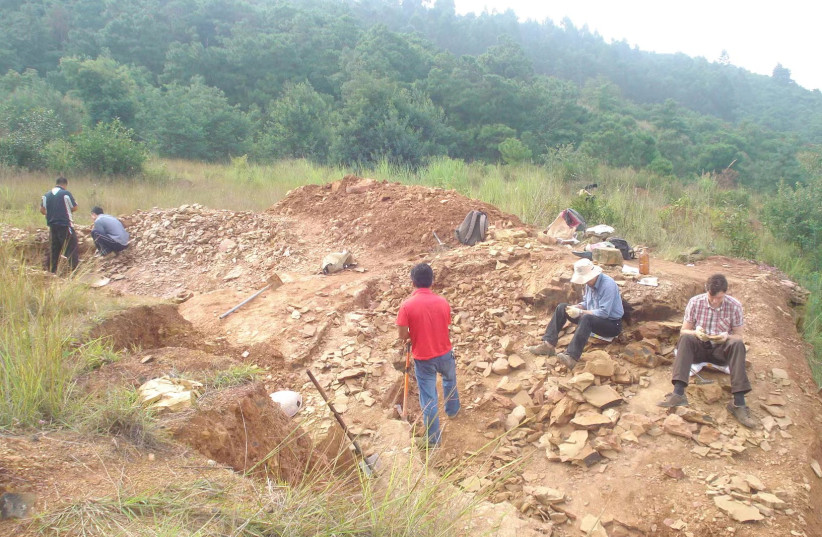A group of prehistoric "moss animals" called Bryozoa - tentacled animals that lived in massive colonies - are not as ancient as previously thought; the earliest fossils of these creatures are seaweeds, a new study found.
In the peer-reviewed study, which was supported by China's National Natural Science Foundation and published on Wednesday in the journal Nature, researchers at Durham University in the United Kingdom and Yunnan University and Guizhou University in China found that the fossils - previously believed to be the oldest Bryozoans - are actually green algae.
This means that Bryozoans are millions of years younger than previously thought.
Bryozoans lived during the Cambrian "explosion," a period of quick evolution 440 million years ago, 40 million years earlier than they were thought to have lived.
New findings mean Bryozoan evolutionary advances were not as rapid as previously held
The delayed appearance of these animals shows that new traits developed via evolution over a long period of time and this was not a unique period of rapid evolutionary advances as previously held.

“If Bryozoans truly evolved after the Cambrian period, it shows that evolution kept its creative touch after this critical period of innovation – maybe the trajectory of life was not set in stone half a billion years ago.”
Dr. Martin Smith, Department of Earth Sciences, Durham University
Ancient fossil material found in the hills of China provided new insight into the “soft parts” of Protomelission gateshousei, which was formerly believed to be the earliest Bryozoan.
From the tissue, the researchers were able to determine that Protomelission belonged to Dasycladales, a group of green algae.
“Here we describe exceptionally preserved non-mineralized anatomy in Protomelission-like macrofossils from the Xiaoshiba Lagerstätte,” the researchers wrote. “Taken alongside the detailed skeletal construction and the potential taphonomic origin of ‘zooid apertures’, we consider that Protomelission is better interpreted as the earliest dasycladalean green alga—emphasizing the ecological role of benthic photosynthesizers in early Cambrian communities.”
“We tend to think of the ‘Cambrian explosion’ as a unique period in evolutionary history, in which all the blueprints of animal life were mapped out,” said study co-author Dr. Martin Smith, of the Department of Earth Sciences at Durham University.
“Most subsequent evolution boils down to smaller-scale tinkering on these original body plans,” Smith added. “But if Bryozoans truly evolved after the Cambrian period, it shows that evolution kept its creative touch after this critical period of innovation – maybe the trajectory of life was not set in stone half a billion years ago.”
A comparison of the Protomelission sample found in Xiaoshiba, the P. gatehousei sample found in Wirrealpa and a sample of the Cambroclavid Deltaclavus graneus found that “The best-preserved of our compression fossils additionally preserve non-skeletal tissue, which is never evident in Wirrealpa.”
“Where previous fossils only preserved the skeletal framework of these early organisms, our new material revealed what was living inside these chambers,” said study co-author Professor Zhang Xiguang of Yunnan University.
“Instead of the tentacles we would expect to see in Bryozoans, we discovered simple leaf-like flanges – and realised we were not looking at fossil animals, but seaweeds,” Xiguang said. “This means that the oldest convincing Bryozoan fossils do not evolve until the next geological period, the Ordovician.
“The largely enclosed nature of Protomelission modules and the presence of external flanges are difficult to reconcile with an archaeocyath construction,” the researchers wrote. “Rather, Protomelission is more convincingly interpreted as the oldest dasyclad green alga.”
The researchers suggested that although the origin of animal groups may not have been as rapid, seaweeds played a larger role in the early oceans than previously thought.
